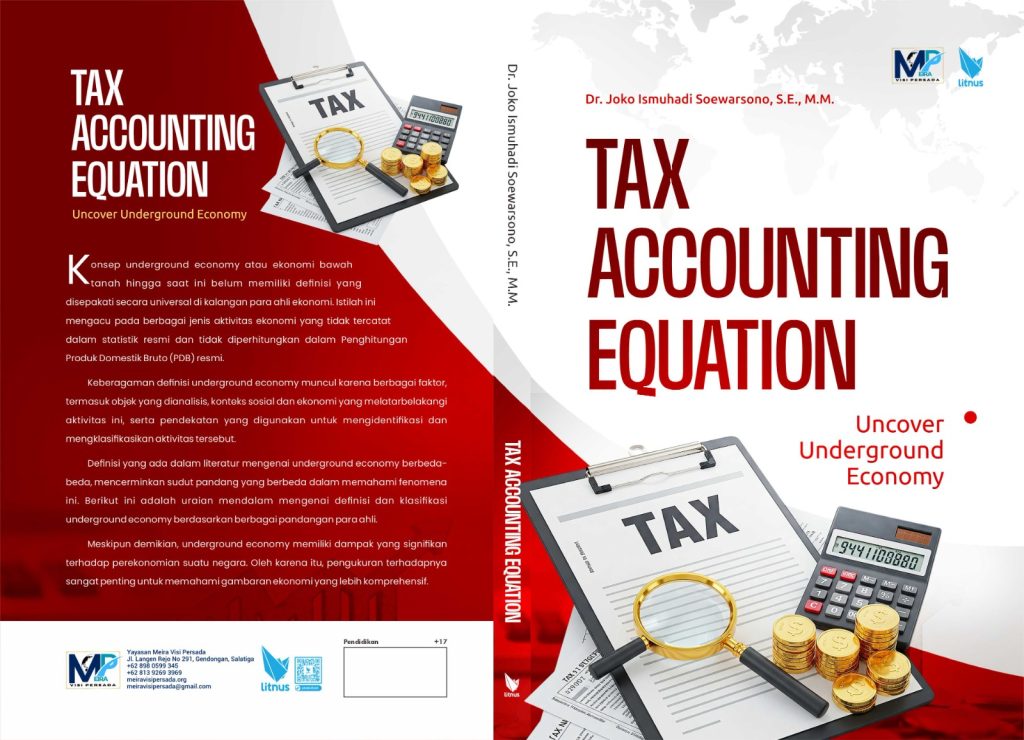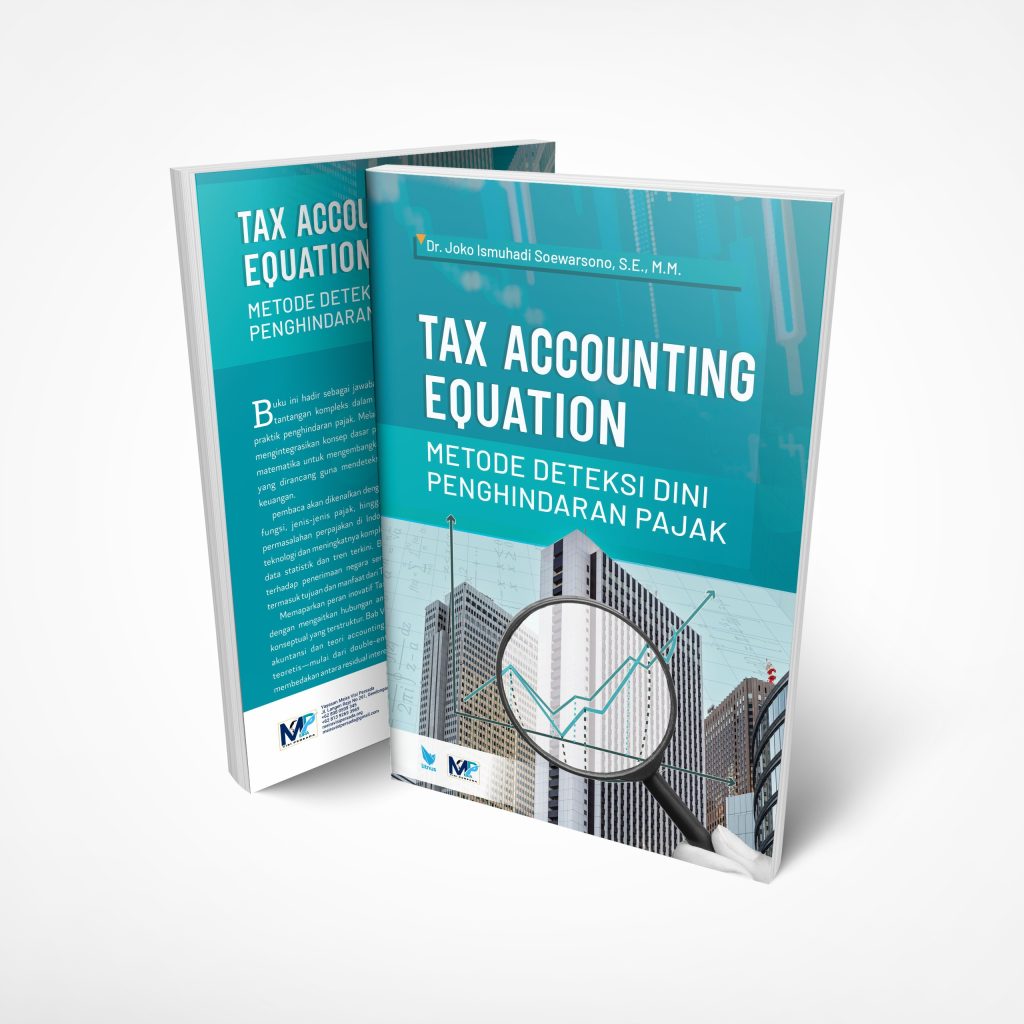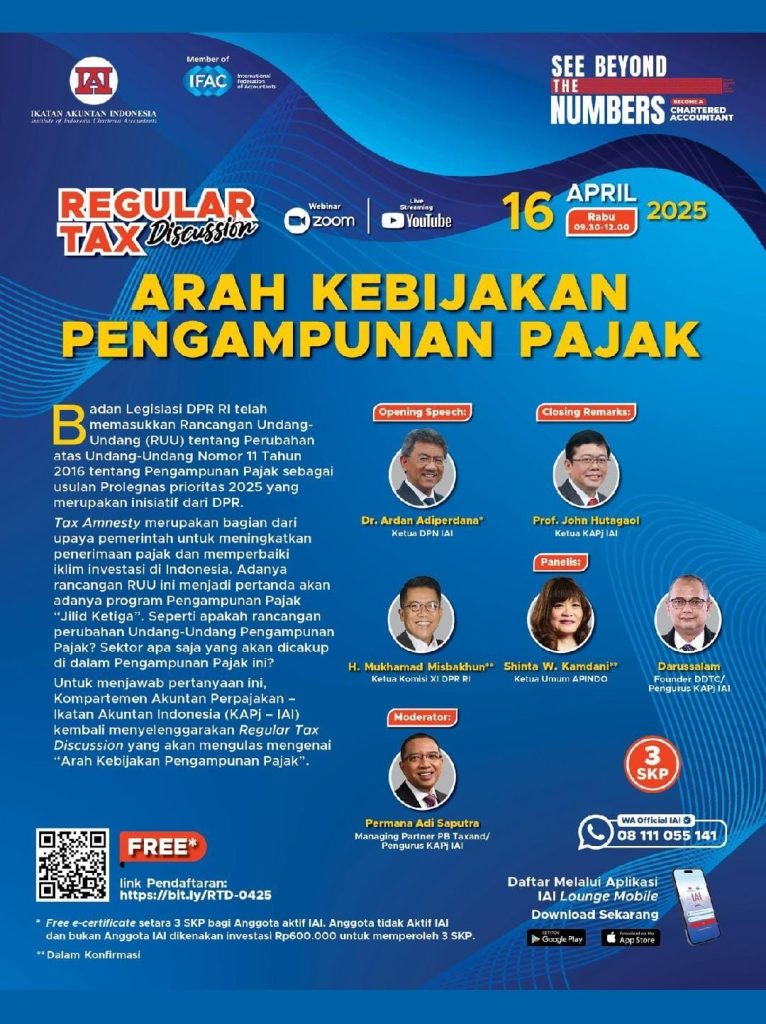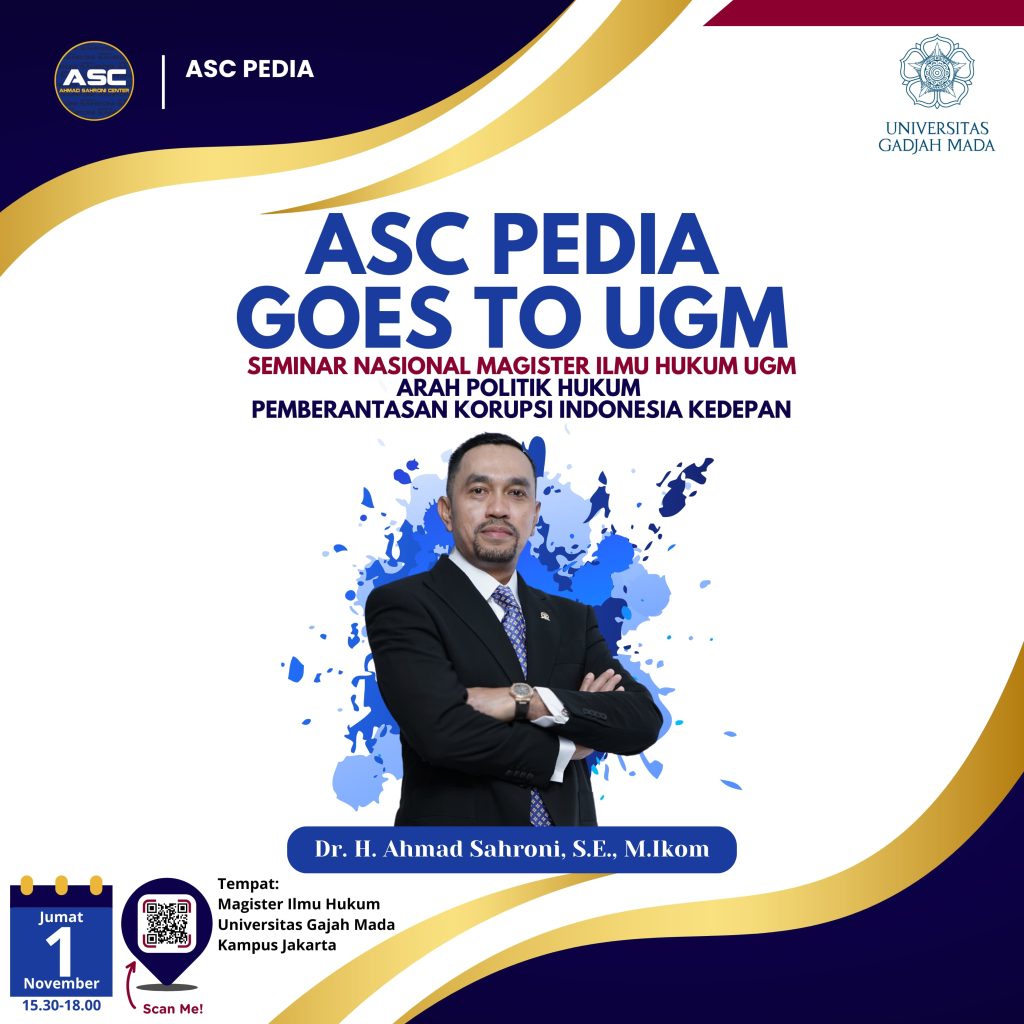
The Tax Accounting Equation: A Forensic Tool for Detecting Underground Economic Activity and Tax Evasion
- Ekonomi
Tuesday, 06 May 2025 06:35 WIB

Jakarta, fiskusnews.com:
1. Introduction: The Tax Accounting Equation and its Forensic Potential
The bedrock of modern accounting is the fundamental accounting equation, which posits that a company’s total assets are equivalent to the sum of its liabilities and its shareholders’ equity. This foundational principle underpins the double-entry accounting system, ensuring that for every debit entry, there is a corresponding credit entry, thereby maintaining balance in the balance sheet. The balance sheet itself serves as a historical summary of a company’s financial standing, outlining what it possesses (assets) and what it owes to others (liabilities and equity) at a specific point in time. By examining the levels of assets, liabilities, and equity, stakeholders can gain a snapshot of a company’s liquidity, solvency, and overall financial stability at that particular moment.
While the basic accounting equation provides a fundamental framework for understanding a company’s financial position, an expanded version incorporates elements from the income statement to offer a more detailed view of changes in equity over time. This expanded equation can include components such as revenue, expenses, and dividends, allowing for a deeper understanding of how a company generates and utilizes its profits. By breaking down equity into its constituent parts like retained earnings, contributed capital, revenue, expenses, and dividends, analysts can trace the flow of value within a company and understand how profits are reinvested, distributed, or retained.
Building upon these foundational principles, a rearranged equation, termed the Tax Accounting Equation (TAE), can be formulated as: Revenue = Expenses + Assets – Liabilities. This equation is derived from the fundamental accounting equation (Equity = Assets – Liabilities) by considering the relationship Equity = Retained Earnings (Beginning) + Net Income – Dividends, and Net Income = Revenue – Expenses. For an initial forensic analysis focused on tax implications, dividends can be temporarily disregarded to simplify the view. This rearrangement shifts the analytical focus from the traditional balance sheet-centric perspective to one that is more aligned with the income statement, emphasizing elements that are directly relevant to taxation. By isolating revenue and expenses and relating them to assets and liabilities, the TAE has the potential to reveal inconsistencies that might arise from undeclared income or overstated deductions, which are key indicators of tax evasion. Consequently, the TAE can serve as an initial screening tool for identifying discrepancies that could suggest the presence of underground economic activity (UEA) and tax evasion, particularly by entities that might be intentionally obscuring their financial dealings.
2. Deconstructing the TAE: A Tax-Centric View of Financial Elements
2.1. Revenue: The Taxable Inflow
Revenue represents the total inflow of economic benefits to a corporation arising from its ordinary activities. For tax purposes, revenue is a crucial starting point as it forms the primary base upon which income tax is levied, making its accurate reporting paramount. Tax regulations mandate that businesses declare all income generated from their operations, and any underreporting directly impacts their tax liability. In the context of UEA, common methods of underreporting revenue include off-the-books sales, where transactions are deliberately not recorded in the formal accounting system, and cash transactions that are received but not declared to the tax authorities. The underground economy often involves transactions specifically designed to evade official recording and taxation. Businesses engaged in such activities might intentionally omit certain sales or transactions from their records to reduce their reported revenue and, consequently, their tax obligations. Furthermore, the principles governing revenue recognition, which dictate when and how revenue should be recorded, can be subject to manipulation for tax evasion purposes. For instance, a corporation might attempt to lower its current tax burden by delaying the recognition of revenue that has already been earned or by prematurely recognizing future sales, thereby shifting taxable income between different accounting periods.
2.2. Expenses: Deductible Outflows and the Risk of Inflation
Expenses are defined as the outflows or consumption of economic benefits during the ordinary activities of a corporation. Tax regulations play a significant role in determining which expenses are deductible and to what extent, as these deductions directly reduce a company’s taxable income, creating an inherent incentive for manipulation. Tax laws specify which business costs can be legitimately deducted from revenue to arrive at taxable profit, and corporations might attempt to exploit these rules to minimize their tax obligations. In the context of a “Corruption Corporation” engaging in UEA, a common tactic involves inflating expenses to conceal illicit income. This could take various forms, such as recording fictitious payments for goods or services never received, disguising bribes as legitimate business costs like consulting fees or marketing expenses, or providing excessive compensation to related parties. Inflated expenses can serve as a conduit for diverting undeclared income or disguising illegal payments, effectively reducing reported profit and thereby lowering tax liability while potentially laundering illicit funds. Therefore, it is crucial to distinguish between legitimate business expenses that are properly deductible for tax purposes and those items that are non-deductible, such as personal expenses or costs lacking proper documentation. Tax authorities routinely scrutinize expense claims to ensure they meet the established criteria for deductibility, and expenses that are deemed illegitimate may be disallowed, leading to adjustments in taxable income.
2.3. Assets: Resources and Their Tax Implications
Assets are resources controlled by a corporation as a result of past events and from which future economic benefits are expected to flow to the corporation. The existence and valuation of a company’s assets have direct tax consequences. For example, tax rules govern how the cost of certain assets, such as property, plant, and equipment, can be recovered over time through depreciation deductions, which reduce taxable income. Additionally, the sale of assets can trigger taxable capital gains or losses, depending on the difference between the asset’s selling price and its tax basis. In the context of UEA, unexplained or disproportionate increases in a corporation’s assets could signal the presence of assets acquired through illegal means or with undeclared funds. Assets that cannot be reasonably linked to reported income or legitimate financing sources may indicate hidden wealth that has not been subjected to taxation. If a corporation’s asset base grows significantly without a corresponding increase in declared revenue or liabilities, it could suggest the infusion of income that has not been reported for tax purposes, potentially originating from illicit activities. Furthermore, the reported value of assets can be subject to manipulation to achieve specific financial reporting or tax objectives. While overstating assets might be used to present a stronger financial position to lenders or investors, in certain situations, such as property tax assessments, there might be an incentive to understate their value to reduce tax liabilities.
2.4. Liabilities: Obligations and Their Tax Impact
Liabilities represent present obligations of the corporation arising from past events, the settlement of which is expected to result in an outflow from the corporation of resources embodying economic benefits. Liabilities can affect a corporation’s taxable income through various deductions, such as interest expenses incurred on legitimate business loans. Interest paid on borrowed funds used for business purposes is typically tax-deductible, which can reduce a corporation’s overall taxable income. However, liabilities can also be manipulated in ways that facilitate tax evasion. For instance, a “Corruption Corporation” might falsely inflate its liabilities by recording fictitious loans from related parties or by exaggerating the amounts owed on genuine debts. This artificial increase in liabilities can lead to higher reported interest expenses, thereby reducing the corporation’s reported profit and its associated tax liability. Conversely, liabilities that are directly related to illicit activities might be hidden altogether to avoid detection by law enforcement and tax authorities. The absence of expected liabilities, such as trade payables for a business with a significant amount of inventory, could also serve as a red flag, potentially indicating that purchases were funded through undeclared income rather than through normal credit arrangements with suppliers.
3. Unmasking Illicit Activities: How TAE Imbalances Signal Fraud
3.1. Inflated Expenses Relative to Revenue
A significant imbalance in the Tax Accounting Equation, where reported expenses are substantially higher than the declared revenue, can be a critical indicator of concealed illicit income. An unusually high expense-to-revenue ratio might suggest that a corporation is attempting to offset undeclared income by artificially inflating its costs of doing business. If a business consistently reports very low profits or even losses despite demonstrating apparent business activity, it could be channeling unreported revenue through the guise of overstated expenses. Certain expense categories are particularly susceptible to such inflationary tactics due to their often subjective nature and the difficulty in verifying the legitimacy of the underlying transactions. Examples include consulting fees, where payments can be made to seemingly legitimate but non-existent entities; marketing expenses, which can encompass vague or poorly documented promotional activities; and travel and entertainment expenses, where costs can be easily exaggerated or fabricated. The recording of fictitious or inflated invoices for services that were never rendered or the submission of reimbursement claims for non-existent travel can be used to move money out of the corporation without attracting immediate scrutiny, effectively hiding revenue and reducing taxable profit.
3.2. Low Liabilities and Substantial Assets Despite Low Reported Revenue
Another potential red flag arises when a corporation exhibits a strong asset base coupled with low liabilities, particularly in situations where the reported revenue is meager. This disconnect between reported income and accumulated wealth can be a strong indicator of hidden, off-the-books income. If a corporation possesses significant assets, such as real estate, investments, or substantial cash reserves, or if it carries very little debt, despite consistently reporting low revenue figures, it raises serious questions about the true sources of its financing and overall profitability. The fundamental accounting equation dictates that assets must be financed by either liabilities or equity. In cases where liabilities are low and reported equity (derived from reported revenue and retained earnings) is also low, the presence of substantial assets suggests that there might be an undisclosed source of funds, potentially representing income that has not been declared for tax purposes. This scenario is particularly concerning as it implies that the corporation has accumulated wealth that is not commensurate with its officially stated financial performance.
3.3. Disproportionate Increases in Assets Without Corresponding Revenue or Liabilities
Sudden or large increases in a corporation’s asset holdings that cannot be reasonably explained by its reported revenue or through legitimate borrowing activities should also be viewed with suspicion. Rapid and unexplained asset growth might point to the infusion of illicit funds into the corporation, possibly representing the proceeds from underground economic activity. If a corporation suddenly acquires significant new assets, such as property, equipment, or financial instruments, without a clear corresponding increase in its sales, profits, or the incurrence of new debt, it could be using undeclared income or proceeds from illegal activities to finance these acquisitions. For instance, a “Corruption Corporation” might use funds derived from bribery or other illicit sources to purchase assets, and if these funds are not reflected in the reported revenue, the TAE would reveal an imbalance. The increase in assets, without a corresponding increase in revenue or liabilities, suggests that the corporation has obtained resources through means that have not been transparently accounted for, raising concerns about potential tax evasion and other financial crimes.
3.4. Anomalies in Liability Levels and Structures
Anomalies in the levels and structures of a corporation’s liabilities can also provide clues about potential tax evasion. Falsely inflated liabilities can be used as a mechanism to artificially reduce taxable income. By creating or exaggerating the amount of debt a company holds, it can report higher interest expenses, which are typically tax-deductible, thereby lowering its overall taxable profit. A “Corruption Corporation” might engage in such practices by reporting fictitious loans from related parties or by inflating the outstanding balances of genuine liabilities. Conversely, the absence of expected liabilities can also be a significant red flag. For example, a business that holds a large amount of inventory would typically have a corresponding level of accounts payable, representing amounts owed to its suppliers. If a corporation reports a substantial amount of inventory but shows very low levels of accounts payable, it could suggest that these purchases were funded through undeclared income or other illicit means, rather than through normal credit terms with vendors. Such inconsistencies in liability levels and structures warrant further investigation to determine the true nature of the corporation’s financial obligations and the sources of its funding.
4. Applying the TAE: Analytical Techniques for Forensic Accountants
4.1. Trend Analysis Over Time
To effectively utilize the Tax Accounting Equation for detecting potential UEA and tax evasion, it is crucial to analyze the relationship between revenue, expenses, assets, and liabilities over several accounting periods. Examining financial data trends can reveal unusual shifts or patterns that might not be apparent when looking at a single point in time. By comparing the components of the TAE and various financial ratios derived from these components across multiple years, forensic accountants can identify significant deviations from a corporation’s historical norms that could indicate fraudulent activity. For instance, a sudden spike in reported expenses or a sharp decline in revenue that is not supported by legitimate business reasons or broader economic conditions should trigger a more in-depth examination of the underlying transactions and accounting practices. Consistent analysis of these trends can help to distinguish between normal business fluctuations and potentially manipulative financial reporting.
4.2. Benchmarking Against Industry Peers
Benchmarking involves comparing a corporation’s TAE components and related financial metrics with those of similar companies operating within the same industry. Industry benchmarks provide a valuable context for evaluating a company’s financial performance and identifying outliers that may warrant further scrutiny. By comparing a suspected “Corruption Corporation’s” expense-to-revenue ratio or asset-to-revenue ratio with the average ratios for its industry peers, significant discrepancies can be identified. For example, if a corporation’s reported profit margins are significantly lower than its competitors due to unusually high expenses, this could be a sign of inflated costs being used to conceal illegal income. Similarly, a company with an asset base that is disproportionately large compared to its revenue when compared to industry averages might be holding unexplained wealth. Identifying such significant outliers in the TAE components or related ratios can serve as a strong indicator of potential irregularities that necessitate a more detailed forensic investigation.
4.3. Ratio Analysis Derived from TAE Components
Calculating and analyzing various financial ratios derived from the components of the Tax Accounting Equation can be a powerful technique for detecting anomalies that might signal UEA or tax evasion. Financial ratios provide a standardized way to assess the relationships between different financial statement items, allowing for a more nuanced understanding of a corporation’s financial health and performance. Key ratios that can be derived from the TAE include the expense-to-revenue ratio, which indicates the proportion of revenue consumed by expenses; the asset-to-revenue ratio, which can highlight potential inefficiencies or unexplained asset accumulation; and the debt-to-asset ratio, which measures the extent to which a company’s assets are financed by debt. Anomalies in these ratios, such as a sudden and substantial increase in the expense-to-revenue ratio without a clear business justification, could indicate the recording of fictitious or inflated expenses. Conversely, an unusually low debt-to-asset ratio for a corporation operating in a capital-intensive industry might suggest the presence of hidden liabilities or the overvaluation of assets. Tracking these ratios over time and comparing them against industry benchmarks can help forensic accountants identify potential areas of concern that require further investigation.
Table 1: Key Ratios Derived from the TAE for Anomaly Detection
| Ratio | Formula (Based on TAE) | What it Indicates | Potential Anomaly and Implication |
|---|---|---|---|
| Expense-to-Revenue Ratio | Total Expenses / Total Revenue | Proportion of revenue consumed by expenses | Sudden increase may indicate inflated expenses for tax evasion |
| Asset-to-Revenue Ratio | Total Assets / Total Revenue | Efficiency of asset utilization or unexplained asset growth | Unusually high ratio compared to peers may suggest hidden assets |
| Debt-to-Asset Ratio | Total Liabilities / Total Assets | Extent to which assets are financed by debt | Unusually low ratio in a capital-intensive industry might suggest issues |
4.4. Cross-Referencing with Other Data
To enhance the effectiveness of the TAE as a forensic tool, it is essential to compare the financial information derived from the equation with other available data sources. Corroborating financial statement data with external information can help to validate its accuracy and uncover discrepancies that might indicate hidden income or fraudulent activities. For example, a corporation’s reported revenue can be compared with its bank deposit records , transaction logs, sales invoices, and even information obtained from whistleblowers or informants. Significant inconsistencies between these different data sets can strongly suggest the presence of off-the-books income that has not been captured in the “Revenue” component of the TAE. Other valuable data sources for cross-referencing include customs data for businesses involved in international trade, tax filings of related parties, and information from regulatory bodies. For instance, discrepancies between a company’s import/export records and its reported revenue, or between its payroll expenses and employee tax filings, could provide compelling evidence of tax evasion. A multi-faceted approach to data analysis, involving the triangulation of information from various sources, significantly increases the likelihood of detecting fraudulent financial behavior.
5. Navigating the Labyrinth: Challenges and Limitations of the TAE
5.1. Sophistication of Concealment Techniques
While the Tax Accounting Equation offers a potentially useful starting point for identifying financial irregularities, it is important to acknowledge that corrupt corporations may employ highly sophisticated methods to conceal their illicit activities, making detection solely through the TAE a challenging endeavor. Advanced fraud schemes can be meticulously designed to circumvent simple analytical checks and imbalances within the basic components of the TAE. Criminals may utilize complex techniques such as creating intricate networks of shell companies, engaging in convoluted and often cross-border transactions, or employing sophisticated accounting manipulations to obscure the true nature of their financial dealings. The use of off-balance-sheet arrangements, where certain assets and liabilities are not recorded on the company’s main financial statements, can further complicate detection using the TAE. Techniques like special purpose entities or complex financial instruments can be used to conceal debt or inflate earnings without directly affecting the core components of the TAE in an obvious or easily detectable manner. Therefore, while the TAE can serve as an initial filter, it may not be sufficient to uncover more intricate and deliberately concealed instances of UEA and tax evasion.
5.2. Data Reliability and the Risk of Falsification
The effectiveness of the Tax Accounting Equation as a forensic tool is fundamentally dependent on the accuracy and reliability of the financial data used in its calculation. If the underlying accounting records and supporting documentation have been deliberately falsified by a “Corruption Corporation,” the TAE, based on this manipulated data, may not accurately reflect the true financial picture and, consequently, may fail to reveal the underlying fraudulent activities. Detecting fictitious transactions and manipulated documentation can be a significant challenge for forensic accountants. Criminals may create entirely fabricated invoices, alter bank statements, or produce sham contracts to support their fraudulent entries. Identifying these falsified records often requires specialized forensic techniques, including meticulous document examination, verification with external sources, and potentially digital forensics to analyze electronic records and metadata. If the data fed into the TAE is itself fraudulent, the equation will likely not reveal the intended discrepancies, highlighting the critical importance of verifying the integrity of the underlying financial information.
5.3. Legitimate Business Variations and Industry-Specific Factors
It is crucial to recognize that legitimate differences in business models, industry-specific factors, and prevailing economic conditions can lead to significant variations in the components of the Tax Accounting Equation across different corporations. These variations can make it challenging to definitively identify illicit activity based solely on the TAE without considering the specific context of the company’s operations and its industry environment. For example, a high expense-to-revenue ratio might be perfectly normal for a startup company that is heavily investing in research and development or marketing to gain market share, whereas a similar ratio for a mature and established corporation in the same industry might raise suspicion. Similarly, debt-to-asset ratios can vary widely between capital-intensive industries, such as manufacturing or telecommunications, and service-based industries that require less investment in fixed assets. Therefore, when applying the TAE as an analytical tool, it is essential to have a thorough understanding of the specific industry in which the corporation operates, its typical business model, and the prevailing economic conditions. Without this context, it can be difficult to distinguish between legitimate variations in the TAE components and those that are genuinely indicative of underground economic activity or tax evasion.
6. Enhancing Detection: Integrating TAE with Broader Forensic Accounting Practices
6.1. Combining TAE with Traditional Financial Statement Analysis
To maximize its effectiveness in uncovering UEA and tax evasion, the Tax Accounting Equation should not be viewed in isolation but rather integrated with traditional financial statement analysis techniques. The TAE can serve as a valuable complement to methods like vertical and horizontal analysis of financial statements, which involve examining financial data as a percentage of a base figure or comparing data across multiple periods, respectively. While the TAE focuses on the fundamental relationship between revenue, expenses, assets, and liabilities, traditional financial statement analysis can provide deeper insights into the proportional changes in individual line items within these broader categories over time and across different financial statements. For instance, a significant increase in a specific expense account highlighted by vertical analysis could be further investigated in the context of the overall expense-to-revenue ratio derived from the TAE. Similarly, analyzing trends in standard financial ratios, such as liquidity ratios (e.g., current ratio, quick ratio) and profitability ratios (e.g., gross profit margin, net profit margin), alongside ratios derived from the TAE (e.g., expense-to-revenue ratio, asset-to-revenue ratio) can provide a more holistic view of a corporation’s financial health and help to identify inconsistencies that might be indicative of fraudulent activity. A deteriorating liquidity ratio, for example, might raise concerns even if the TAE components appear balanced, suggesting potential hidden liabilities or overstated assets that warrant further investigation.
6.2. Leveraging Technology and Data Analytics
The application of technology and data analytics tools can significantly enhance the efficiency and effectiveness of using the Tax Accounting Equation for fraud detection. In today’s data-rich environment, the ability to analyze large datasets and identify subtle anomalies and patterns is crucial for uncovering sophisticated financial crimes. Data analytics platforms equipped with artificial intelligence (AI) can be employed to automatically flag unusual fluctuations or deviations in the components of the TAE or in the ratios derived from them. For example, an AI-powered anomaly detection system could identify a sudden and unexplained increase in a corporation’s expense-to-revenue ratio compared to its historical performance or industry benchmarks, prompting forensic accountants to focus their investigative efforts on the underlying expense transactions. Furthermore, machine learning algorithms can be trained on historical data of both fraudulent and non-fraudulent companies to detect complex fraud patterns that might not be evident through a simple analysis of the TAE alone. These advanced analytical techniques can go beyond the basic relationships captured by the TAE, identifying more subtle indicators of financial statement manipulation and potential tax evasion.
6.3. Incorporating Qualitative Information and Investigative Techniques
While the Tax Accounting Equation and related quantitative analysis can provide valuable insights into potential financial irregularities, it is essential to integrate these findings with qualitative information and traditional investigative techniques for a more comprehensive fraud examination. Non-financial information, such as in-depth knowledge of the specific industry in which the corporation operates, recent news reports or regulatory filings related to the company or its key personnel, and tips or allegations received from whistleblowers, can provide crucial context and direction for the investigation. Unusual patterns or imbalances identified through TAE analysis should be followed up with qualitative inquiries and investigative procedures to understand the underlying reasons and to determine whether fraudulent activity has indeed occurred. Forensic interviews with employees, management, or even external stakeholders can provide valuable information and explanations for observed anomalies. Additionally, thorough document examination of supporting records, such as invoices, contracts, bank statements, and emails, is critical for corroborating or refuting the initial suspicions raised by the TAE analysis. The combination of quantitative analysis using the TAE with qualitative insights and robust investigative practices offers the most effective approach to uncovering underground economic activity and tax evasion.
7. Conclusion and Recommendations: Leveraging the TAE for Enhanced Tax Compliance
7.1. Summary of Findings: TAE as an Initial Screening Tool
The Tax Accounting Equation (Revenue = Expenses + Assets – Liabilities) presents a simplified yet potentially insightful method for the initial assessment of fraud risk within a corporation. By focusing on the relationships between key financial components directly relevant to taxation, the TAE can serve as a valuable lens through which to analyze a corporation’s financial statements. Imbalances within the components of the TAE, such as significantly inflated expenses relative to revenue, low liabilities coupled with substantial assets despite low reported revenue, disproportionate increases in assets without corresponding revenue or liabilities, and anomalies in liability levels and structures, can act as red flags, indicating the potential presence of underground economic activity and tax corruption. These imbalances warrant further, more detailed investigation using a range of forensic accounting techniques.
7.2. Actionable Recommendations for Tax Authorities and Forensic Accountants
Based on the analysis, several actionable recommendations can be made for tax authorities and forensic accounting professionals seeking to enhance their ability to detect UEA and tax evasion:
- Incorporate the TAE into Initial Risk Assessment Frameworks: Tax authorities should consider integrating the TAE into their initial risk assessment processes for identifying taxpayers who may be at higher risk of non-compliance. By analyzing key financial data through the lens of the TAE, potential anomalies can be flagged early in the assessment process, allowing for a more targeted allocation of audit resources.
- Develop Industry-Specific Benchmarks for TAE Components and Related Ratios: To facilitate more effective outlier detection, tax authorities and industry associations should work towards developing industry-specific benchmarks for the components of the TAE and the financial ratios derived from them. These benchmarks would provide a more relevant context for evaluating a corporation’s financial performance and identifying deviations that are truly indicative of potential fraud rather than legitimate business variations.
- Integrate TAE Analysis with Data Analytics Tools and Cross-Referencing: Forensic accountants and tax auditors should leverage data analytics tools and AI-powered systems to automate the analysis of large datasets related to the TAE components. Furthermore, it is crucial to integrate TAE analysis with the cross-referencing of financial data against external sources such as bank records, transaction logs, and third-party information to enhance detection capabilities and validate the accuracy of reported financial information.
- Emphasize the Importance of Using the TAE in Conjunction with Other Forensic Accounting Techniques and Qualitative Information: While the TAE offers a valuable initial analytical tool, it should not be relied upon in isolation. Forensic accountants must use the TAE in conjunction with other established forensic accounting techniques, such as traditional financial statement analysis, ratio analysis beyond those directly derived from the TAE, and a thorough examination of underlying documentation. Furthermore, the findings from TAE analysis should always be considered in the context of relevant qualitative information and insights into the specific industry and company operations.
- Recommend Ongoing Training for Tax Auditors and Forensic Accountants on the Application and Limitations of the TAE: To ensure the effective utilization of the TAE, ongoing training and professional development should be provided to tax auditors and forensic accountants. This training should cover the theoretical underpinnings of the TAE, practical guidance on its application in various scenarios, and a clear understanding of its inherent limitations and the importance of integrating it with other investigative methods.
7.3. Final Thoughts: Balancing Innovation and Prudence in Fraud Detection
In conclusion, the Tax Accounting Equation offers a promising initial approach to identifying potential underground economic activity and tax evasion by focusing on the relationships between revenue, expenses, assets, and liabilities. While it provides a simplified yet potentially insightful lens for analysis, it is crucial to recognize that the TAE should not be considered a definitive detector of fraud on its own. Corrupt corporations may employ sophisticated concealment techniques, and the reliability of financial data can be compromised through falsification. Furthermore, legitimate business variations across different industries and economic conditions can lead to variations in TAE components. Therefore, a balanced and prudent approach is necessary, one that combines innovative tools like the TAE with established forensic accounting principles, advanced technology, and a thorough understanding of the broader business context. By integrating the TAE into a comprehensive framework of analytical techniques and investigative procedures, tax authorities and forensic accountants can enhance their ability to uncover illicit financial behavior and promote greater tax compliance.
Reporter: Marshanda Gita – Pertapsi Muda
Share
Berita Lainnya
Non-Conviction Based Asset Forfeiture: A Potential Mechanism for Enhancing Tax Revenue and Deterring Tax Crimes
digitAl-Capone: Cara Afdol Berantas Judol
Dr. Joko Ismuhadi’s Tax Accounting Equation: A Forensic Tool for Indonesian Tax Analysis
Ringgit Malaysia Anjlok ke Level Terendah Sejak Krisis Ekonomi Asia 1998
WES WAYAE KETEMU MANEH, REK!REUNI PRODIP PAJAK ‘88 – NGELUMPUK NANG SUROBOYO, REK
Universitas Borobudur Terakreditasi Unggul Selenggarakan Seminar Nasional Bekerjasama Dengan MPR
Rekomendasi untuk Anda

Berita Terbaru
Eksplor lebih dalam berita dan program khas fiskusnews.com
Tag Terpopuler
# #TAE
# #TAX ACCOUNTING EQUATION
# #TAX FRAUD
# #TAX EVASION











